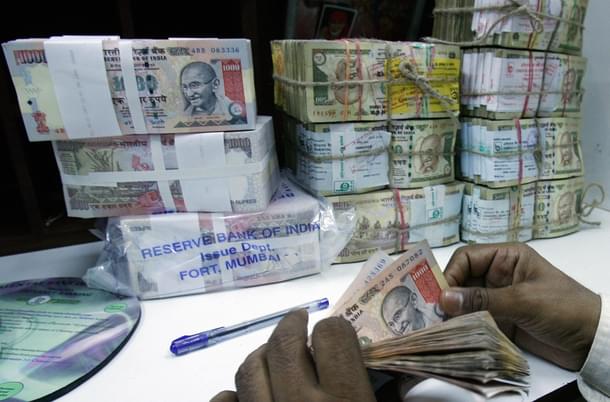Economy
Why The Latest GDP Numbers Still Do Not Pass The Smell Test
R Jagannathan
Feb 09, 2016, 09:44 PM | Updated Feb 10, 2016, 04:39 PM IST
Save & read from anywhere!
Bookmark stories for easy access on any device or the Swarajya app.


Why should the latest GDP numbers be analysed with caution? Is our actual real GDP growth lower?
The latest GDP numbers – which project 2015-16 growth at 7.6 percent based on the new gross value added (GVA) methodology adopted from last year – should be analysed with caution.The number is actually higher than the government’s own estimate of 7.2-7.4 percent, but that is no consolation. This is because the numbers are suspect.
Three areas are of immediate concern-
First, there is the highly unbelievable figure of 9.5 percent manufacturing growth projected for this year. This contrasts with the Index of Industrial Production (IIP) growth of 3.9 percent in April-November, and bank bad debts that are yet to bottom out.
Even private sector banks like ICICI Bank and Axis Bank have reported higher gross Non-performing Assets (NPAs) in the December quarter. If you exclude manufacturing, every other non-farm sector has shown a slower rate of growth in 2015-16 than in 2014-15 (albeit, in the Central Statistical Office’s advance estimates).
Second, the low estimated growth in nominal GDP, of 8.6 percent against real GDP growth of 7.6 percent, shows that something is wrong. When retail inflation is at 5.6 percent (it has been positive all through 2015-16, and rising in recent months), and the wholesale prices index (WPI) has been negative all the time, the GDP deflator used is probably low.
But if one assumes that the WPI is a poor proxy for a producer price index, and is also outdated (the CPI base was changed up last year, but not the WPI), the chances are the real GDP deflator should be something else.
If we assume that a producer price index should be positive rather than negative like the WPI, the deflator should be higher than the one assumed. It implies that real GDP growth should be lower than the 7.6 percent suggested by the CSO. If the producer price index is actually lower than the WPI (as evidenced by the sharp fall in raw material prices), the deflator would be even lower than what we now have.
Three, in an era of big drops in commodity prices, and where export markets have collapsed, corporate costs and revenues will be gyrating wildly. But debt servicing costs may remain the same. In this context, the net impact on corporate profitability and value-added may be difficult to capture easily.
Business Standard, which studied early-bird results for the third quarter of 2015-16, offers three different pictures of topline and bottomline growth for 194 major companies, depending on which distorting company you include or exclude from the analysis. The newspaper writes:
Including RIL (Reliance Industries), the database of 194 companies has shown a revenue contraction of 2.6 percent, year-on-year. If RIL is excluded, the other 193 companies under consideration have shown a reasonable 9.1 percent increase in revenues. If financial services and information technology (IT) sectors as well as RIL are excluded, the remaining 121 companies have shown a 5.8 percent increase in revenues.
If this is the level of difference indicated for well-known companies, one wonders what kind of skew underlies the Ministry of Corporate Affairs (MCA) database on which the GDP numbers depend crucially.
As things stand, the new GDP series is markedly higher than the old one, and it is the old one which seems compatible with the reality we see on the ground – the reality of weak corporate profit growth and declining sectoral growth rates as shown even in the current GVA method (excluding manufacturing and agriculture).
Given these shortcomings, it is best to assume that our actual real GDP growth is lower, and that we need to fix the data before we start celebrating higher growth.
We need to fix two things:
#1: The MCA corporate database has to be verified for authenticity by putting a bunch of forensic accountants to check for over-counting, misreporting and fictitious numbers.
#2: The WPI must as quickly as possible be replaced with a producer prices index to create a proper GDP deflator.
Till that happens, the Finance Ministry would be well advised to stop assuming that the economy – especially manufacturing – is already recovering. It probably is not doing all that well, and in the context of a global economy staring at another recession, the future is less rosy than it looks.
Jagannathan is former Editorial Director, Swarajya. He tweets at @TheJaggi.





